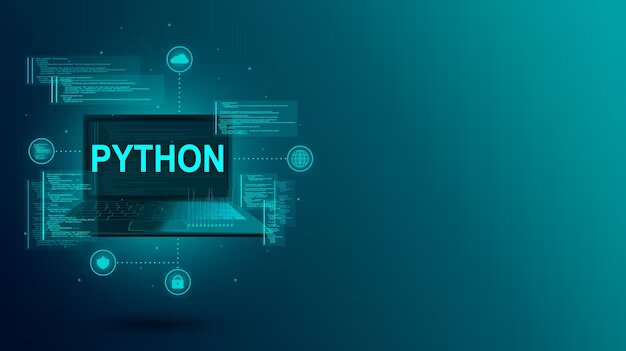The world of data is expanding rapidly, and the ability to derive valuable insights from it is increasing in importance. This is where Python for Data Science comes in. Python, a flexible and fledgling accommodating language, has turned into the go-to instrument for information fans and experts the same.
Whether you’re a finished beginner or make them programme insight, this guide will furnish you with the key information and assets to set out on your Python for Data Science venture.
Why Python for Data Science?
There are many justifications for why Python rules in the information science domain. Here are only a couple:
- Intelligibility and Straightforwardness: Python’s punctuation is clear and succinct, making it simpler to learn and comprehend contrasted with different dialects. This permits you to zero in on the information and examination as opposed to grappling with complex sentence structure.
- Plentiful Libraries and Structures: The Python environment brags a huge assortment of particular libraries and structures customized for information science errands. NumPy, Pandas, Matplotlib, Seaborn, and Scikit-learn are only a couple of models, offering functionalities for information control, examination, representation, and AI.
- Huge and Dynamic People group: Python has a large and active community of developers and data scientists who share resources and actively contribute to its development. This implies you’ll find adequate help and direction online when you experience difficulties.
- Cross-Stage Similarity: Python runs flawlessly on different working frameworks, including Windows, macOS, and Linux, making it open no matter what your favoured stage.
Getting Started with Python for Data Science
Now that you’re persuaded about Python’s true capacity, we should jump into the reasonable moves toward kicking you off:
1. Choose Your Setting:
- Python Establishment: Download and introduce the most recent rendition of Python from the authority site (https://www.python.org/).
- A text editor or IDE: Pick an improvement climate that suits your necessities.
- Jupyter Notebook, PyCharm, Visual Studio Code, and even a basic text editor like Sublime Text are popular choices.
2. Learn Python Rudiments:
- Online Courses: Python courses are available on platforms like Coursera, edX, and Udacity for beginners.
- Intuitive Instructional Exercises: Investigate intuitive instructional exercises like Google’s “Python for Everyone Specialization” or “First Experience with Python” to get involved insight.
- Books and Assets: Allude to novice cordial books like “Mechanize the Exhausting Stuff with Python” or “Python Intensive Lesson” for an organized learning approach.
3. Ace the Fundamental Libraries:
- NumPy: For mathematical registering and cluster control.
- Pandas: For information control and investigation with DataFrames and Series.
- Matplotlib and Seaborn: For information representation and making educational diagrams and charts.
- Scikit-learn: For AI calculations and model structure.
4. Practice, Practice, Practice:
The most effective way to cement your comprehension is through reliable practice. Work on little activities, dissect genuine world datasets and partake in web-based coding difficulties to improve your abilities.
Also Read: Unveiling Your Future: After 12th Grade, High-Earning Computer Science Courses
Exploring the Data Science Landscape
With the essentials added to your repertoire, you’re prepared to investigate various parts of information science:
- Information Cleaning and Preprocessing: Learn how to deal with missing values, outliers, and data inconsistencies.
- Exploratory Information Investigation (EDA): Find examples, patterns, and connections inside your information utilizing illustrative insights and perceptions.
- AI: Fabricate models to anticipate future results, arrange significant pieces of information, or make proposals in light of your information.
- Information Correspondence: Impart your discoveries and experiences through narrating and information representation methods.
Remember: The excursion of learning information science is constant. Don’t be afraid to try new things, make mistakes, and ask for help from others. Here are a few extra assets to keep you spurred:
- Online journals and Sites: Follow web journals like KDnuggets, Investigation Vidhya, and Dataquest for smart articles and instructional exercises.
- Kaggle: Partake in information science contests on Kaggle to gain from others and test your abilities.
- Online Discussions and Networks: Join online networks like Stack Flood and Reddit’s r/datascience to get clarification on some things and interface with different students.
End
Python for Data Science opens ways to energise prospects. By making the principal strides and committing yourself to persistent learning, you’ll be exceptional in opening the force of information and adding to significant disclosures across different fields. In this way, begin your Python process today and leave with an enhancing experience in the realm of information science!

